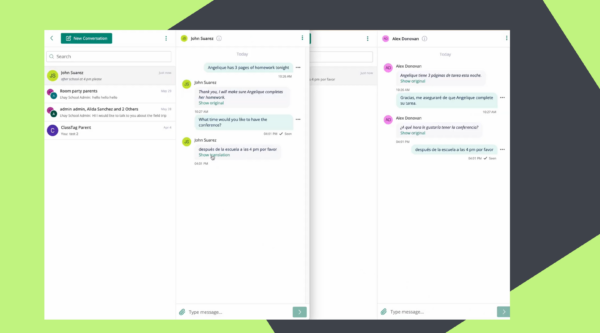

If you’ve long been an advocate for crisis planning, the recent years have amplified the importance of having a crisis communication plan in schools. For many, creating a crisis communication plan always seemed valuable in theory, yet difficult to prioritize—until 2020 arrived. Today, in 2024, demand for effective crisis communication strategies is higher than ever, driven by increasing safety and security needs.
A comprehensive crisis communication plan allows school leaders to act decisively in emergencies and ensures that all stakeholders, from parents to local responders, are informed. Effective communication is critical to any crisis plan—strong plans can collapse without it, and conversely, well-executed communication can salvage even flawed planning. Here’s how to build a crisis communication plan that schools can rely on before, during, and after any emergency.
Build a Reliable Contact Network—Before the Crisis Hits
There’s an adage in crisis response: never meet your crisis team during a crisis. An effective school crisis communication plan depends on a well-maintained contact list of key program leaders and community responders. Be sure to include roles such as district administrators, school safety officers, local emergency responders, and media contacts. SchoolStatus offers tools to streamline communications with various stakeholders, helping ensure all contacts are up-to-date and easily accessible.
When compiling this list, don’t assume any contact is “optional”—unexpected situations can require quick collaboration with a variety of contacts. Keep the list regularly updated (at least quarterly), as outdated information can waste precious time in an emergency.
Write Your School Crisis Communication Plan in Advance
In a crisis, time is of the essence. Prepare a crisis communication template to standardize messages for different scenarios. Draft common emergency notifications in advance, including lockdown alerts, early release notices, and public health updates. When a situation arises, these pre-written messages can be quickly adapted and sent out.
Here are 10 essential crisis messages to draft in advance:
- Status Change (e.g., Lockdown or Secured Entry)
- Evacuation Notification
- Early Release Notice
- Neighborhood Emergency Advisory
- Extended Closure (for weather or facility issues)
- Tragic Loss Notification
- Staff Misconduct Update
- Event Cancellation
- Negative Media Coverage Response
- Traffic Incident Notification
This type of planning frees up critical time during an emergency and can prevent message missteps that may occur under stress. To involve students in crisis preparedness, consider recruiting high school writers to draft sample notifications—they often have insight into the kinds of questions families may have.
Test Your Crisis Communication Plan with Realistic Scenarios
Once your contacts are set and your message templates are ready, it’s time to practice. Tabletop exercises let school crisis teams respond to simulated scenarios in real time, building confidence and competence. Practice also reveals weak points; for example, what happens if phone lines are down, or if the primary evacuation route is blocked? Testing your crisis plan under various conditions can uncover gaps and provide solutions in advance.
Create Visuals: Map Your Plan and Print Out Posters
Implementing a crisis plan can be overwhelming in a tense moment. Mapping your communication plan as a flow chart or decision tree allows crisis leaders to visualize each step and key decision. Posters of your crisis flow chart should be kept in accessible locations throughout the school. This provides immediate guidance and keeps teams aligned during emergencies. Posters are inexpensive, easy to update, and can be printed or laminated for long-term use—ensuring the plan is always within reach.
Conclude and Reflect—Every Crisis is a Learning Opportunity
Once the crisis has passed, evaluate your communication plan’s effectiveness. What worked well? What didn’t? Use this feedback to update templates, improve workflows, and bolster your team’s readiness for future emergencies. According to research on crisis management in education from NSPRA, schools that consistently review and update their crisis response plans are better prepared to manage future incidents confidently.
The insights gained from previous crises make school leaders more resilient and prepared to safeguard their communities. With a proactive crisis communication plan, schools can lead with transparency, reassure families, and protect their students and staff.
Stay Prepared with SchoolStatus
At SchoolStatus, we believe that effective communication is key to safety and engagement. Learn more about how we can support your crisis communication needs and sign up for regular insights to keep your crisis communication plan effective and ready
Stay Connected
News, articles, and tips for meeting your district’s goals—delivered to your inbox.





